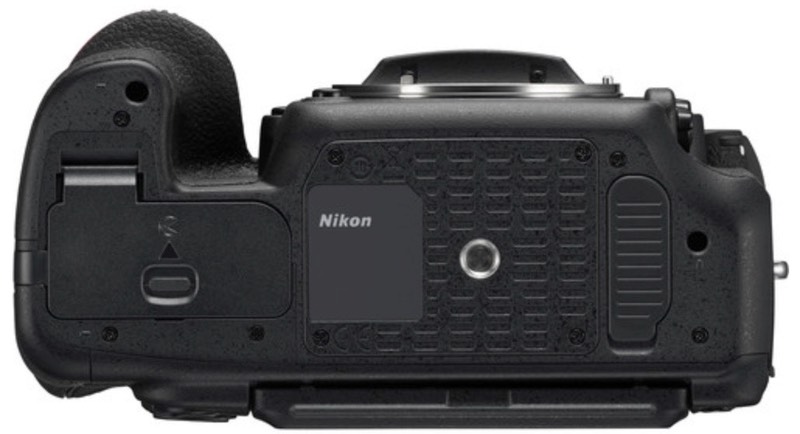With the Nikon Japan site now listing the D500 as "Old product" we have the beginning of the end for the venerable camera.

On its back and struggling to get up.
While some sites are reporting the D500 as "discontinued," that's not actually how things work at Nikon. Each subsidiary runs independently when it comes to end-of-life for products. Nikon Japan, the home market, tends to be fairly quick to pull the plug on things, and product with the 20##### serial numbers stops being produced. We've also long had DX lenses that are no longer available to order by a dealer in Japan that still are available from NikonUSA, for instance.
This is partly due to that non-global attribute of Nikon's system I've been complaining about for decades (yes, decades). By serializing product at the factory to individual markets, this creates all sorts of side frictions, including gray market and differing end-of-life points. To some degree, this is Nikon bean counters continually micromanaging things, thinking they're saving pennies (yen) when they probably aren't. They're just bolstering the old-IBM-like upper management promotion mechanisms as subsidiary CEOs jockey to show they can do better than one another.
What I take the Nikon Japan reclassification of the D500 to mean is this: production is down to remaining parts supply, and Nikon corporate will produce the remaining bodies that can be made to the subsidiaries where they'll fetch the biggest profit margins from. Long term, though, the D500 is winding down.
Two things need to be talked about. The first is the headline question. The second is what's next for high-end DX from Nikon?
The D500 stood out for a number of reasons. It looked a lot like a baby D5, for one thing: 20mp like papa, same focus sensors as papa, mostly same controls and functions as papa. A bit fewer fps, sure, but also a couple of more consumer-side conveniences (SnapBridge and tilting LCD).
For sports and wildlife photographers who were already cropping in FX because they didn't have enough lens, the D500 actually was a clear improvement over buying a D5: more pixels on subject and lower price. That's not to say that the D5 didn't have advantages, but that many didn't view those advantages as worth the extra price.
One problem with the D500 was that there was no D400. Nikon went way too long between the lame D300s upgrade and the D500 introduction, and during that period Nikon was pushing everyone to FX (partly by denying a full DX lens set, buzz, buzz). Most D300 purchasers who wanted to upgrade had long ago made the decision to go D8xx, or worse, something else (m4/3 was an early choice, Fujifilm X is the more recent choice). Thus, D500 sales never really took off the way the D300 sales did.
I suspect that Nikon felt that the D500 was a disappointment in terms of volume, particularly recently. OMG! I'd argue long and hard that the lack of volume is Nikon's own fault, not customer lack of interest. As I keep pointing out, the D500 is to this day still the best performing APS-C (DX) camera you can buy. Excellent image quality, top performance in virtually every arena, particularly focus. Do you hear Nikon marketing telling you that? No, not really.
Nikon's marketing has no long game (and sometimes no early game, either). They put almost all their effort into selling whatever was just released, and never manage to do followup or ongoing marketing. The tag line and short summary on the Nikon corporate site for the D500, for instance, is still the same as it's been for five years. NikonUSA still points to the dpreview initial impressions trip. Neither points out that the five-year-old D500 still tops any APS-C (DX) camera you can purchase.
So here we have the best APS-C camera being discontinued, which can only mean there's a better one coming, right?
Yes, probably from Fujifilm (X-H2 in May). Fujifilm's problem will be that they don't have the lens set that the D500 user would really want (e.g. lack of telephoto choices, particularly fast ones or light ones). Does lack of lenses sound like a familiar problem? ;~)
I'm not getting the sense that Nikon wants to put out another US$2000 DX camera. At least not any time soon. Maybe never. For a bit over a decade Nikon has been on a "push FX" craze, and since that now encompasses US$1000 to US$5500 bodies in the mirrorless lineup, that's what they really want to sell you.
Indeed, you can sort of see it in the lens lineup. The reason why we'll get a 400mm PF and 800mm PF lens in mirrorless? Because you need longer versions if you're not making a DX camera to use them. 400mm on FX is not far off the 450mm equivalent of the 300mm f/4 PF on DX, and 800mm on FX is actually a bit better than the 750mm equivalent of the 500mm f/5.6 PF on DX. Seems like a clear signal to me.
Of course, for that to work, Nikon is going to have to radically improve the autofocus on the Z5 II, Z6 III, and Z7 III. 3D-tracking and Group-area AF was pretty darned good on the D500, after all.
So, it's a sad day for D500 users thinking about upgrading. The D850 gives them more pixels in FX, but is pretty much a D500 in DX crop. The Z7 II ditto, but not as good at tracking focus of erratic motion. The Z9 also ditto, but at a much more expensive price.
Here's hoping that I'm wrong and that Nikon does have a reasonable DX future for the prosumer/pro user. Of course, there's this: the D500 is still today the best APS-C (DX) camera you can buy. So if you have one, you can still claim to be state-of-the-art, congratulations.